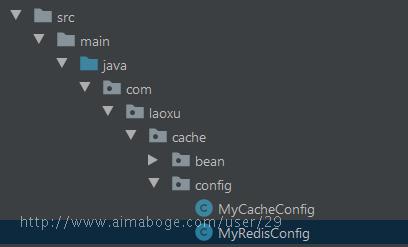1、引入redis的starter依赖
<dependency>
<groupId>org.springframework.boot</groupId>
<artifactId>spring-boot-starter-data-redis</artifactId>
</dependency>
2、配置redsi地址
(一) 简单配置
spring.redis.host=localhost
(二) 详细配置
# spring redis
# Redis服务器地址
spring.redis.host=127.0.0.1
# REDIS (RedisProperties)
# Redis数据库索引 (默认为0)
spring.redis.database=0
# Redis服务器连接端口
spring.redis.port=6379
# Redis服务器连接密码(默认为空)
spring.redis.password=123456
# 连接池最大连接数 (使用负值表示没有限制)
spring.redis.jedis.pool.max-active=8
# 连接池最大阻塞等待时间 (使用负值表示没有限制)
spring.redis.jedis.pool.max-wait=-1
# 连接池中的最大空闲连接
spring.redis.jedis.pool.max-idle=8
# 连接池中的最小空闲连接
spring.redis.jedis.pool.min-idle=0
# 连接超时时间 单位 ms (毫秒)
spring.redis.timeout=300
3、测试缓存到redis
package com.laoxu.cache.controller;
import com.laoxu.cache.bean.Employee;
import com.laoxu.cache.service.EmployeeService;
import org.springframework.beans.factory.annotation.Autowired;
import org.springframework.data.redis.core.RedisTemplate;
import org.springframework.data.redis.core.StringRedisTemplate;
import org.springframework.web.bind.annotation.*;
@RestController
public class EmployeeController {
@Autowired
private EmployeeService employeeService;
@GetMapping("/emp/{id}")
public Employee getEmp(@PathVariable("id") Integer id){
return employeeService.getEmployee(id);
}
@GetMapping("/emp")
public Employee updateEmp(Employee employee){
return employeeService.updateEmployee(employee);
}
}
要将对象存到缓存中须实现序列化接口
public class Employee implements Serializable
访问:http://localhost:8080/emp/1

redis中的值

将缓存结果序列化转为json格式
创建配置类

配置Redis
package com.laoxu.cache.config;
import com.fasterxml.jackson.annotation.JsonAutoDetect;
import com.fasterxml.jackson.annotation.PropertyAccessor;
import com.fasterxml.jackson.databind.ObjectMapper;
import org.springframework.boot.context.properties.ConfigurationProperties;
import org.springframework.cache.CacheManager;
import org.springframework.context.annotation.Bean;
import org.springframework.context.annotation.Configuration;
import org.springframework.data.redis.cache.RedisCacheConfiguration;
import org.springframework.data.redis.cache.RedisCacheManager;
import org.springframework.data.redis.connection.RedisConnectionFactory;
import org.springframework.data.redis.serializer.Jackson2JsonRedisSerializer;
import org.springframework.data.redis.serializer.RedisSerializationContext;
import org.springframework.data.redis.serializer.RedisSerializer;
import org.springframework.data.redis.serializer.StringRedisSerializer;
import java.time.Duration;
@Configuration
@ConfigurationProperties(prefix = "spring.cache.redis")
public class MyRedisConfig {
private Duration timeToLive = Duration.ZERO;
public void setTimeToLive(Duration timeToLive) {
this.timeToLive = timeToLive;
}
@Bean
public CacheManager cacheManager(RedisConnectionFactory factory) {
RedisSerializer<String> redisSerializer = new StringRedisSerializer();
Jackson2JsonRedisSerializer jackson2JsonRedisSerializer = new Jackson2JsonRedisSerializer(Object.class);
//解决查询缓存转换异常的问题
ObjectMapper om = new ObjectMapper();
om.setVisibility(PropertyAccessor.ALL, JsonAutoDetect.Visibility.ANY);
om.enableDefaultTyping(ObjectMapper.DefaultTyping.NON_FINAL);
jackson2JsonRedisSerializer.setObjectMapper(om);
// 配置序列化(解决乱码的问题)
RedisCacheConfiguration config = RedisCacheConfiguration.defaultCacheConfig()
.entryTtl(timeToLive)
.serializeKeysWith(RedisSerializationContext.SerializationPair.fromSerializer(redisSerializer))
.serializeValuesWith(RedisSerializationContext.SerializationPair.fromSerializer(jackson2JsonRedisSerializer))
.disableCachingNullValues();
RedisCacheManager cacheManager = RedisCacheManager.builder(factory)
.cacheDefaults(config)
.build();
return cacheManager;
}
}
其中setTimeToLive表示缓存过期时间
redis中的值

扩展:操作redis工具类
package com.neo.service;
import org.slf4j.Logger;
import org.slf4j.LoggerFactory;
import org.springframework.beans.factory.annotation.Autowired;
import org.springframework.data.redis.core.*;
import org.springframework.stereotype.Service;
import java.io.Serializable;
import java.util.List;
import java.util.Set;
import java.util.concurrent.TimeUnit;
@Service
public class RedisService {
private Logger logger = LoggerFactory.getLogger(RedisService.class);
@Autowired
private RedisTemplate redisTemplate;
/**
* 存值
* set value
* @param key
* @param value
* @return
*/
public boolean set(final String key, Object value) {
boolean result = false;
try {
ValueOperations<Serializable, Object> operations = redisTemplate.opsForValue();
operations.set(key, value);
result = true;
} catch (Exception e) {
logger.error("set error: key {}, value {}",key,value,e);
}
return result;
}
/**
* 存值带失效时间
* set value with expireTime
* @param key
* @param value
* @param expireTime
* @return
*/
public boolean set(final String key, Object value, Long expireTime) {
boolean result = false;
try {
ValueOperations<Serializable, Object> operations = redisTemplate.opsForValue();
operations.set(key, value);
redisTemplate.expire(key, expireTime, TimeUnit.SECONDS);
result = true;
} catch (Exception e) {
logger.error("set error: key {}, value {},expireTime {}",key,value,expireTime,e);
}
return result;
}
/**
* 判断key是否存在
* @param key
* @return
*/
public boolean exists(final String key) {
return redisTemplate.hasKey(key);
}
/**
* 获取值
* @param key
* @return
*/
public Object get(final String key) {
Object result = null;
ValueOperations<Serializable, Object> operations = redisTemplate.opsForValue();
result = operations.get(key);
return result;
}
/**
* 删除值
* remove single key
* @param key
*/
public void remove(final String key) {
if (exists(key)) {
redisTemplate.delete(key);
}
}
/**
* 删除多个值
* batch delete
* @param keys
*/
public void remove(final String... keys) {
for (String key : keys) {
remove(key);
}
}
/**
* 匹配删除值
* batch delete with pattern
* @param pattern
*/
public void removePattern(final String pattern) {
Set<Serializable> keys = redisTemplate.keys(pattern);
if (keys.size() > 0)
redisTemplate.delete(keys);
}
/**
* hash存值
* hash set
* @param key
* @param hashKey
* @param value
*/
public void hashSet(String key, Object hashKey, Object value){
HashOperations<String, Object, Object> hash = redisTemplate.opsForHash();
hash.put(key,hashKey,value);
}
/**
* hash获取值
* hash get
* @param key
* @param hashKey
* @return
*/
public Object hashGet(String key, Object hashKey){
HashOperations<String, Object, Object> hash = redisTemplate.opsForHash();
return hash.get(key,hashKey);
}
/**
* 列表存值
* list push
* @param k
* @param v
*/
public void push(String k,Object v){
ListOperations<String, Object> list = redisTemplate.opsForList();
list.rightPush(k,v);
}
/**
* 列表截取范围获取值
* list range
* @param k
* @param l
* @param l1
* @return
*/
public List<Object> range(String k, long l, long l1){
ListOperations<String, Object> list = redisTemplate.opsForList();
return list.range(k,l,l1);
}
/**
* 添加一个元素到集合中
* set add
* @param key
* @param value
*/
public void setAdd(String key,Object value){
SetOperations<String, Object> set = redisTemplate.opsForSet();
set.add(key,value);
}
/**
* 获取集合中所有元素
* set get
* @param key
* @return
*/
public Set<Object> setMembers(String key){
SetOperations<String, Object> set = redisTemplate.opsForSet();
return set.members(key);
}
/**
* 有序添加元素到集合中
* ordered set add
* @param key
* @param value
* @param scoure
*/
public void zAdd(String key,Object value,double scoure){
ZSetOperations<String, Object> zset = redisTemplate.opsForZSet();
zset.add(key,value,scoure);
}
/**
* 根据优先级截取范围
* rangeByScore
* @param key
* @param scoure
* @param scoure1
* @return
*/
public Set<Object> rangeByScore(String key,double scoure,double scoure1){
ZSetOperations<String, Object> zset = redisTemplate.opsForZSet();
return zset.rangeByScore(key, scoure, scoure1);
}
}
更详细的工具类:RedisUtil.java
 sprig boot 整合 redis 缓存
sprig boot 整合 redis 缓存 恭喜注册成功,快来登录吧!
恭喜注册成功,快来登录吧!